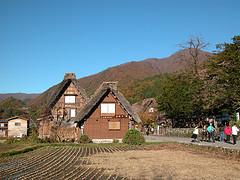 The housing conditions represented one offend to the laws and municipal positions. The people if established in any old building, under an absolute hygienical deficiency, with water scarcity, as she points a report of 5 Police station of Health of the Federal District: Dark, humid and old houses, find repletas of inhabitants who live there accumulated in improper cubculos, badly aired and deficiently illuminated. Everything occurs here to oppose the hygiene, seeming that the unhappy hidding place was of has very condemned being able for them public that they had never looked for to take care of the necessities of its inhabitants. In the mounts then, these conditions of uncleanliness grow: there garbage for all part is seen (…). (Port, 1936; p.22-25 apud Carone, Edgard, 1979, 33-37).
The housing conditions represented one offend to the laws and municipal positions. The people if established in any old building, under an absolute hygienical deficiency, with water scarcity, as she points a report of 5 Police station of Health of the Federal District: Dark, humid and old houses, find repletas of inhabitants who live there accumulated in improper cubculos, badly aired and deficiently illuminated. Everything occurs here to oppose the hygiene, seeming that the unhappy hidding place was of has very condemned being able for them public that they had never looked for to take care of the necessities of its inhabitants. In the mounts then, these conditions of uncleanliness grow: there garbage for all part is seen (…). (Port, 1936; p.22-25 apud Carone, Edgard, 1979, 33-37).
According to periodical of the Fanfulha, that it esteem this type of housing in one tero of the existing habitations in So Paulo: ‘ ‘ In each cubculo, true beehive human being, frequently compresses all a family of workers, to the times composed of eight or nine pessoas’ ‘. (Fanfulha, 11/10/1904 p.2 Apud Pine and Hall, 1981, p.43). Some housings closed blocks completely, where in its interior worse constructions were still mutiplicavam, originated many tenement houses. The formation of villages was common around the industries, mainly of fabric, that if they located next to the railway lines. The land division and the construction of modest houses in those local ones were a lucrative business highly. Some villages were enaltecidas for its qualities, as in the case of 1 Village So Paulo Economizer and the Zlia Maria, closed with school, church, club, esportivo field. ‘ was considered one; ‘ self-sufficient world and a prolongation of the plant commanded the life of the laborers for disciplines and order through the control social’ ‘ (Of Decca, 1989, p.26). The laboring villages had a common character for its linking with the industry representing a relation between capital and work.